King Pacific Lodge Fishing Report Aug 2, 2025
Fishing Report Aug 2, 2025
Moving into the latter half of the season, we couldn’t be more excited. The season so far has been a huge success although it’s been a bit of a different one for the salmon runs. We intercept a multitude of salmon runs that pass through our waters and 99% of the time a lot of these runs overlap. Lately though, we experienced a lull of sorts that lasted a few days, where we seemed to have been in-between runs and had to work hard to find fish.
However, as if someone flicked a switch, the fishing really turned on a few days ago providing some our best fishing of the season. We saw a record number of tyees in the past 5 days, including a beauty 53.5 lb hog caught this morning at Cheney 2 and a 41 a couple of days ago spurred on by girl power. Ella, one of our guests, guided by up-and-coming apprentice guide, Shelby, were the lucky ones to nail the 41 on a flasher and pink flash fly at 37 ft right in the lounge at Cheney. The 53.5 lb hog was lured to bite by an anchovy behind a flasher at 69 ft!
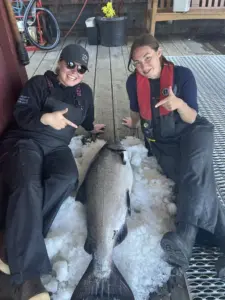
Girl Power!
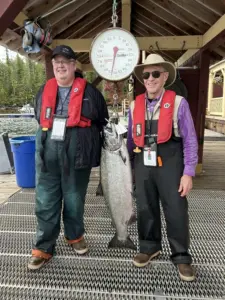
Hog of the year (so far) 53.5 lbs!
The most productive areas continue to be Cheney, Cheney 2 and Cape Mark, with pockets of action at times at Ivory, Cape Swain and McIness. A whole assortment of things has been working, so it’s just a matter of switching around until you find the right combination. Dummy flashers, inline flashers, spoons, anchovies, holy roller herring, flash fliese, hootchies and cut plugs have all been producing fish so it’s really hard to say what has been the magic combo.
Halibut have been somewhat elusive but are there if you are willing to put the time in. McGregor bank seems to be the most consistent on a low slack tide.
Lings have been pretty plentiful and providing a way to fill up the fish box for those who like turn those ugly, but tasty, bottom dwellers into fish’n’chips.
The weather has been nothing short of phenomenal, with light winds, calm seas less than a metre, and no precipitation to speak of in the past 10 days. This has allowed us to fish anywhere we like and not be limited by rough sea conditions.
Featured Employee of the Week – Glenn “Mickey” Reese
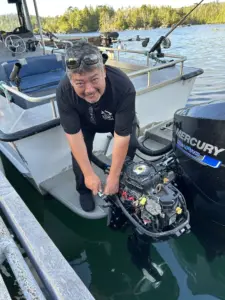
Mickey hard at work
This week the spotlight is on Glenn Reese, more affectionately known as “Mickey” or “Pooh Bear”. Mickey has been around the industry since the last century, first getting his feet wet way back in 1996, near his hometown of Hartley Bay, BC.
Mick has worked at several lodges and has done pretty much everything a guy can do during his career, working on the “outside” at a lodge. From dockhand, to dock supervisor, to guiding, to maintenance of boats and lodge mechanical systems, he has done it all. Largely working behind the scenes this year, Mick has been invaluable in keeping our boats and systems running smooth.
Thanks Mick, keep up the great work!
Ever Wondered:
What is happening to the Kelp Forests along the Coast of North America?
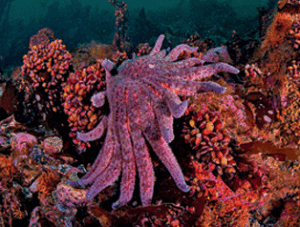 Kelp beds along the Pacific Coast have been shrinking and even disappearing over the last 9 or 10 years. What has been causing this is a combination of factors, including climate change with ocean temperatures rising, but the major factor has been the decline of the population of “Sea Stars”, a type of starfish. Sea stars were affected by a disease known as Sea Star Wasting Disease or Sea Star Wasting Syndrome. Back in 2013, there was an outbreak of this disease which wiped out a species called Sunflower Sea Stars. These animals were the number one predator of purple sea urchins. With the lack of predators, the urchin population exploded and urchins continually graze on kelp. This has created some areas known as Urchin Barrens where kelp has been replaced by dense populations of urchins.
Kelp beds along the Pacific Coast have been shrinking and even disappearing over the last 9 or 10 years. What has been causing this is a combination of factors, including climate change with ocean temperatures rising, but the major factor has been the decline of the population of “Sea Stars”, a type of starfish. Sea stars were affected by a disease known as Sea Star Wasting Disease or Sea Star Wasting Syndrome. Back in 2013, there was an outbreak of this disease which wiped out a species called Sunflower Sea Stars. These animals were the number one predator of purple sea urchins. With the lack of predators, the urchin population exploded and urchins continually graze on kelp. This has created some areas known as Urchin Barrens where kelp has been replaced by dense populations of urchins.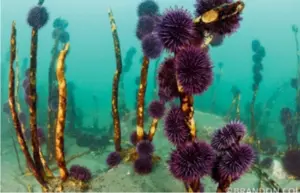
A natural predator of urchins is the sea otter. Sea otters were hunted to extinction along the Pacific NW of the US and along the coast of BC back in the late 1800s. However, they are now repopulating the coast after 20 mating pair were introduced into the Kyuquot area, along the NW side of Vancouver Island in the mid 70’s. The population has expanded its territory and now reach as far as the North Coast and Haida Gwaii. We see some here in Milbanke Sound, quite often in Seaforth Channel. The good news is that once the population returns to historic numbers, this will keep the urchin population in check and bring the kelp back. That’s already occurred along the northwest side of Vancouver Island where kelp beds have returned in full force and shouldn’t be long till we start to see improvement in the central coast as well.
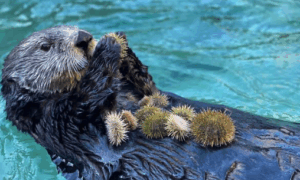
For more information, especially on the decline of kelp in California, click here for an article published by the National Wildlife Federation.
For more info on the sea otter story of Kyuquot, click on this CBC article
Don’t Wait Another Minute!
There are only a couple of spots left this season in very early September which will provide some great fishing for chinook and coho (we usually see our largest coho of the year caught then) along with the bottom critters that are always present throughout the year.
Please reach out if you’d like to take advantage of some “late season” fishing or to chat about 2026 availability. We are already booking up extremely fast for 2026 so it’s never too early to start making plans. Hope to hear from you soon!
Tight Lines!
Terry “Remington” Schultz – terry@kingpacificlodge.com
Lisa Cuthbert – lisa@kingpacificlodge.com
Lorna Landry – lorna@kingpacificlodge.com

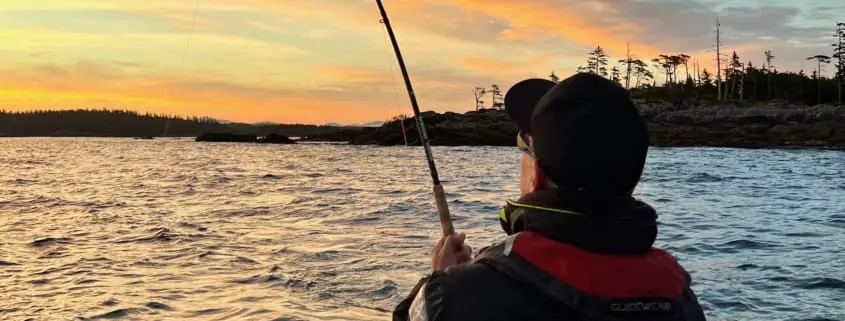
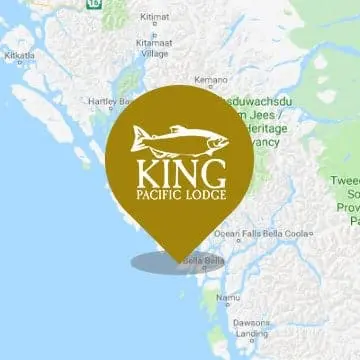


Leave a Reply
Want to join the discussion?Feel free to contribute!